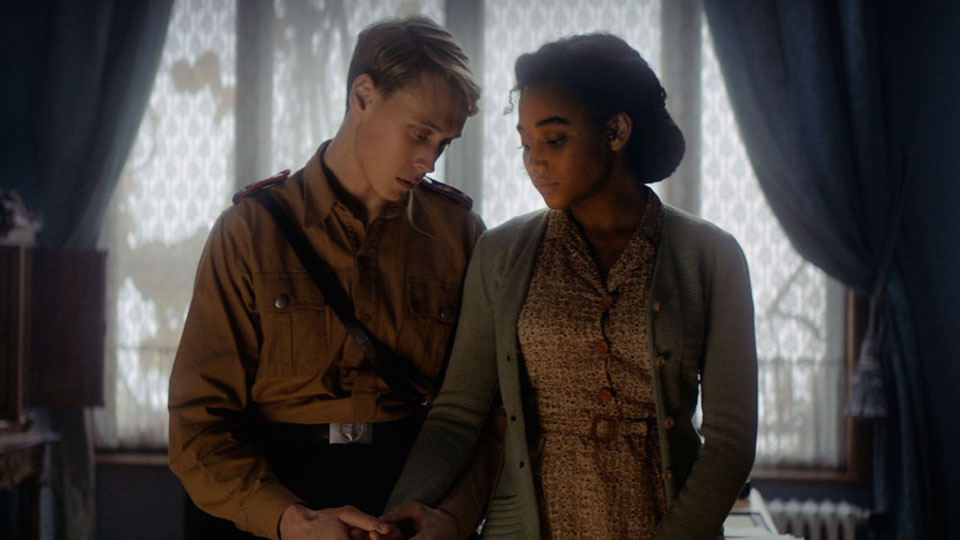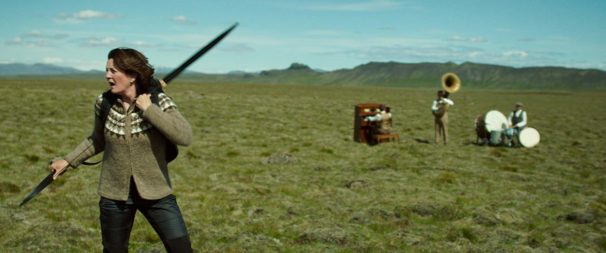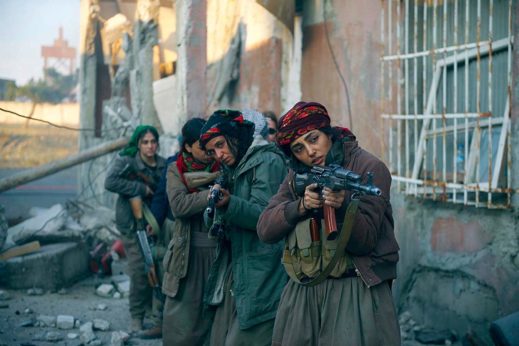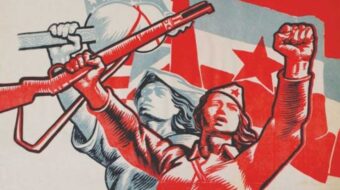
TORONTO—Women were the focus of attention at this year’s Toronto International Film Festival, behind and in front of the camera—cast, crew and creators. A third of the 340 films screened were directed by women. Many featured women’s stories and/or used the talents of female actors and directors.
To lay the groundwork for the appreciation of women’s contributions to filmmaking, no better candidate could have taken on the challenge than famed film aficionado and documentarist, Mark Cousins, known for his 15-hour episodic Story of Film: An Odyssey. This mind-boggling series opened people’s eyes to amazing cinema from the far reaches of the globe. He did it again here with a screening of the first four hours of an eventual 16-hour epic tribute to world female directors, Women Make Film: A New Road Movie Through Cinema.
In this four-year project, Cousins intends to bring to light their talents and contributions, and place women in the proper history slot where they should have been if it weren’t for the male domination of the industry. Cousins’s mesmerizing Irish brogue enchanted viewers in his previous films, but here he turned the role over to ally Tilda Swinton with her very proper English. The rest of the series will feature other female narrators. The film is structured as a class on directing, editing and writing. You may not agree with all his superlatives or analyses describing the clips from 130 films from over 30 countries, and he claims these are certainly far from a complete list, but certainly this is a great opportunity to not only learn about filmmaking but also discover some unsung heroes of film history. The film’s website provides a partial list of titles.
Here are just a few of my favorites from the over 115 films by and about women shown at TIFF this year:
We’re well aware of the main groups of victims of Hitler’s regime—communists, Jews, Roma, homosexuals—but little is known about Blacks in Nazi Germany during the upheaval of World War II. A stylish and moving film, Where Hands Touch, by the accomplished Black British director Amma Assante, is a continuation of her interest in themes of race and class. Her highly acclaimed drama about a young mixed-race woman in late 18th-century England, entitled Belle (2014), and the rare story of a mixed marriage between a Black king and white woman in The United Kingdom, precedes her latest revelation of little known examples of racism throughout history. Where Hands Touch focuses on another strange relationship, a young biracial German teenage girl falls in love with a member of the Hitler Youth! Her German mother tries to protect the daughter she loves as the country begins to go mad with hatred, and the story heads for disaster. The film is structured in a simplistic Hollywood style but packs an emotional wallop as Lenya traverses the risky corridors of hate and discrimination, as her boyfriend is confronted with impossible choices between his love for a Black girl and his adulation of a racist country. Hitler apparently learned from the American treatment of Blacks, as tens of thousands were also rounded up along with the millions of others who were sent to the death camps.

Certainly one of the strangest plots in the many films about women, and probably the most radical, is Woman at War, an anti-war film from Iceland. Dubbed an eco-terrorist, Halla is determined to stop industry from destroying the rugged landscape of her beloved homeland. She creatively evades the local police in her continuing destruction of power lines feeding the giant factories. To complicate the story of a choir director by day, and ecoterrorist by night, Halla is also determined to adopt a young girl from a war-torn country and doesn’t want to risk her chance of saving the life of one young child. The comic-fantasy includes a trio of musicians who show up in random scenes playing the soundtrack live. There’s also a dog named “woman” that follows her everywhere while the police and military try every method (drones, helicopters, night lights) to find the person cutting the lines—to no avail. She conducts the choir, with no one knowing who she really is.
A rare documentary from Libya called Freedom Fields documents a young women’s soccer team two weeks, two years, four years and six or so years after the Libyan “Revolution.” Directed by Naziha Arebi, it also charts the tragic decline of Libyan society after the U.S.-instigated overthrow of the Gaddafi government. The team faces growing difficulties in a country racked with violence and fundamentalism. At one point in the film a player states, “Gadaffi warned of this—that we’d have suffering.” He also warned that the West wanted to create chaos to take over the resources of the richest country in Africa. Now ISIS controls most of the country, the girls have to go to Lebanon to play, if at all, and the future looks even bleaker. Throughout the intimate examination of a country in decline we learn about the politics of women playing sports, the difficulties of traveling out of the country, and what it means to “represent” a country in international sports, all the while getting firsthand glimpses of Libya as it exists today.

Women in battle is a tough subject since war is destructive for all sides, and women are often seen as victims rather than aggressors. The Kurdish Pershmurga fighters are seen by some as heroines and by others as terrorists. The truth is, just in one incident alone, 7000 women and girls were kidnapped by Daesh (ISIS) in the Iraqi mountains in 2014 and many are still missing. Some escaped and became soldiers and fought back against their captors, and Eva Husson, in Girls of the Sun, tells their story. The rape, torture and enslavement of helpless unarmed women and children is cruel and beyond understanding, but their determination to organize to defeat the enemy is monumental and reminiscent of other chapters in the history of war. The heroic role of women in the struggle for liberation or against fascism and imperialism has been witnessed throughout history. The women against apartheid in South Africa, Vietnamese women who fought for the liberation of their country, Soviet women who joined all the ranks of the military to save the USSR from annihilation by the Nazis, and Cuban women who fought for the Revolution alongside the brave men who liberated their country, are just a few examples.

MOST POPULAR TODAY


Zionist organizations leading campaign to stop ceasefire resolutions in D.C. area

High Court essentially bans demonstrations, freedom of assembly in Deep South

Afghanistan’s socialist years: The promising future killed off by U.S. imperialism

Communist Karol Cariola elected president of Chile’s legislature






Comments